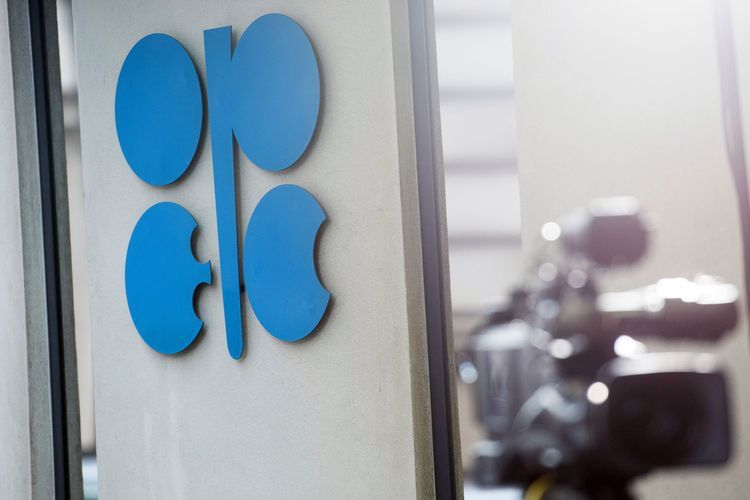
As if a mini-collapse in oil prices wasn’t bad enough for OPEC, the pattern in which futures contracts are trading years from now has flipped into the worst possible structure for the exporter group.
Brent and West Texas Intermediate crudes, down almost 15 percent since late May, are both trading in contango, where forward prices get higher all the way into the next decade. While it’s a structure that normally denotes weak demand for spot cargoes, the price pattern could also be bad news for the Organization of Petroleum Exporting Countries as it can sometimes tempt producers outside the group to lock in output for future years.
Saudi Arabia is among nations that have been saying for months that a re-balancing is under way in the oil market after OPEC and other producing nations agreed late last year to cut production. That view was undermined in recent weeks by data showing that combined stockpiles of crude and fuels in the U.S., still the biggest consumer, swelled by 22 million barrels. The International Energy Agency in Paris suggested Wednesday that there’s little sign 2018 will be much better.
“It’s not good news for OPEC,” said Warren Patterson, commodity strategist at ING Bank NV. “Nothing this week has been particularly bullish. Non-OPEC supply is going to be stronger than demand growth, suggesting OPEC are possibly going to have to make even more cuts or extend them.”
Backwardation Banished
Until last week, the forward curves for Brent and WTI had partly been trading in backwardation, meaning some prices were lower further in the future. That flipped into full contango last week, as the U.S. Energy Information Administration unexpectedly said crude inventories rose 3.3 million barrels. The structure became even more entrenched on Wednesday when the IEA said non-OPEC producers led by shale will add barrels more quickly than any expansion in global consumption.
Brent time-spreads between December 2017 and 2018, and then 2018 to 2019, are trading in the deepest contangos since mid-November, the most bearish structure since before OPEC agreed to cut output.
OPEC Disconnect
“OPEC’s decision to merely extend production cuts showed a disconnected cartel, which was not on the ‘market pulse’,” said Thibaut Remoundos, founder of Commodities Trading Corporation Ltd. The increase in later-dated futures has been driven by a surge of activity from consumers such as shipping companies and airlines, while bullish bets on the market’s structure have been unwound, Remoundos said.
Consumers have been quick to lock in cheap future supplies as crude prices have dropped below $50. Citigroup Inc. analysts including Daoyuan Zhou wrote in a report on Friday that structural changes in the options market are likely a reflection of consumer activity being stepped up. Producers may hedge 1.3 billion barrels of next year’s crude supply in the second half of this year, BofA Merrill Lynch analysts wrote.
The weakness of crude timespreads has outpaced the declines in the nearest prices. That’s a sign that market concerns about a lingering supply glut have extended beyond the short-term into later years. On Thursday, WTI for December 2019 was as much as $1.37 cheaper than the same contract for December 2020, just 10 cents away from its most bearish level in a year.
Some of the world’s biggest banks have also grown increasingly pessimistic about the prospects for crude prices into next year. Morgan Stanley said recently that OPEC will need to extend cuts for the whole of 2018 if it wants to keep the market in balance. Meanwhile, JPMorgan slashed its forecast for next year by $10, anticipating “a substantial build in inventories” as U.S. shale producers ramp up output. Even if crude stockpiles do eventually fall, financially traded oil may still struggle to reflect it, said BofA Merrill Lynch.
“There were all those expectations that inventories would go down and that would lead to a tighter market this year and in following years,” Olivier Jakob, managing director of consultancy Petromatrix GmbH, said by phone. “Right now it has been delayed and the expectations of a re-balancing are starting to evaporate.”
Recommended for you
